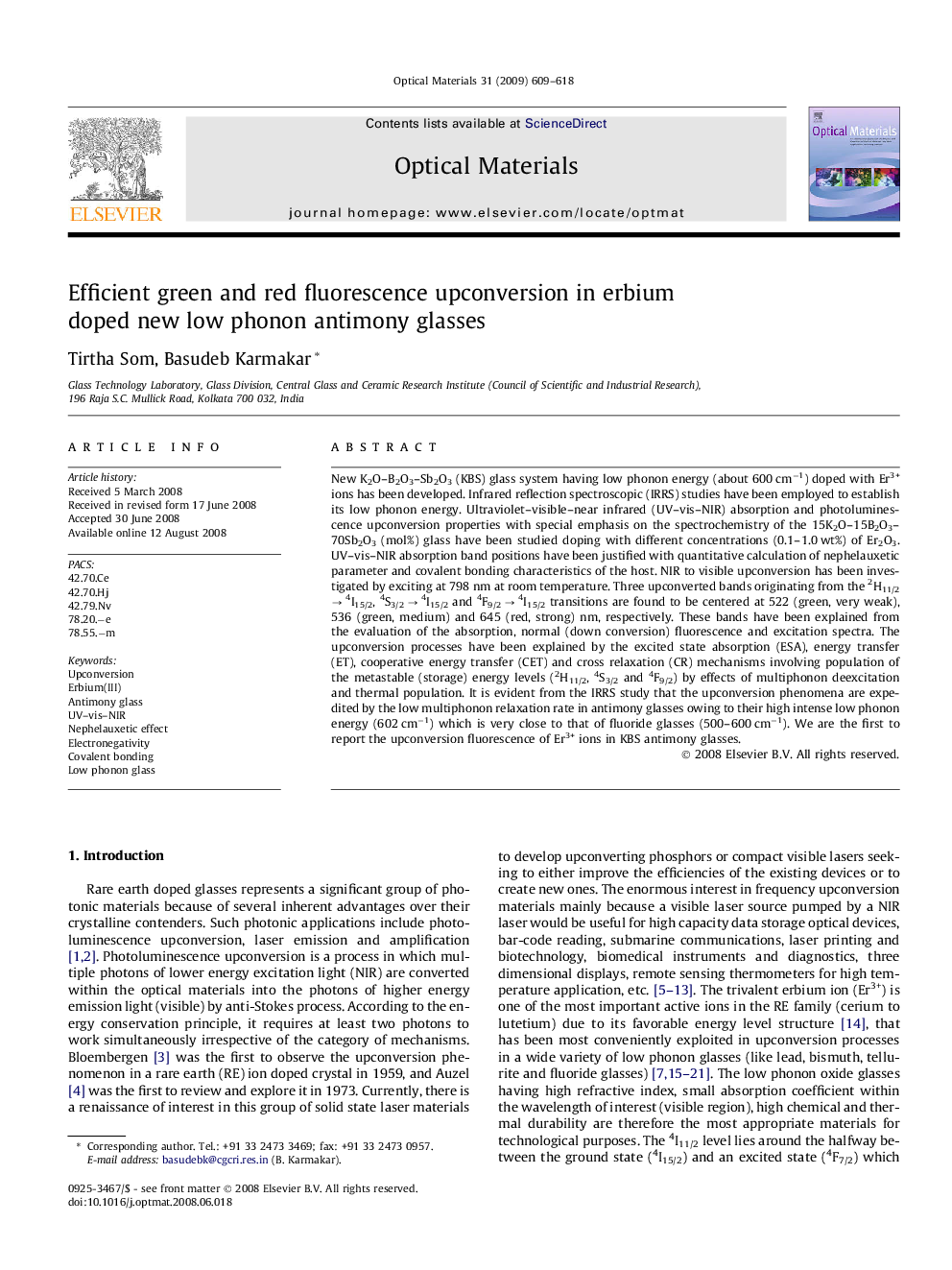| کد مقاله | کد نشریه | سال انتشار | مقاله انگلیسی | نسخه تمام متن |
|---|---|---|---|---|
| 1496211 | 992957 | 2009 | 10 صفحه PDF | دانلود رایگان |

New K2O–B2O3–Sb2O3 (KBS) glass system having low phonon energy (about 600 cm−1) doped with Er3+ ions has been developed. Infrared reflection spectroscopic (IRRS) studies have been employed to establish its low phonon energy. Ultraviolet–visible–near infrared (UV–vis–NIR) absorption and photoluminescence upconversion properties with special emphasis on the spectrochemistry of the 15K2O–15B2O3–70Sb2O3 (mol%) glass have been studied doping with different concentrations (0.1–1.0 wt%) of Er2O3. UV–vis–NIR absorption band positions have been justified with quantitative calculation of nephelauxetic parameter and covalent bonding characteristics of the host. NIR to visible upconversion has been investigated by exciting at 798 nm at room temperature. Three upconverted bands originating from the 2H11/2 → 4I15/2, 4S3/2 → 4I15/2 and 4F9/2 → 4I15/2 transitions are found to be centered at 522 (green, very weak), 536 (green, medium) and 645 (red, strong) nm, respectively. These bands have been explained from the evaluation of the absorption, normal (down conversion) fluorescence and excitation spectra. The upconversion processes have been explained by the excited state absorption (ESA), energy transfer (ET), cooperative energy transfer (CET) and cross relaxation (CR) mechanisms involving population of the metastable (storage) energy levels (2H11/2, 4S3/2 and 4F9/2) by effects of multiphonon deexcitation and thermal population. It is evident from the IRRS study that the upconversion phenomena are expedited by the low multiphonon relaxation rate in antimony glasses owing to their high intense low phonon energy (602 cm−1) which is very close to that of fluoride glasses (500–600 cm−1). We are the first to report the upconversion fluorescence of Er3+ ions in KBS antimony glasses.
Journal: Optical Materials - Volume 31, Issue 4, February 2009, Pages 609–618